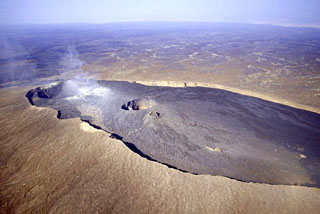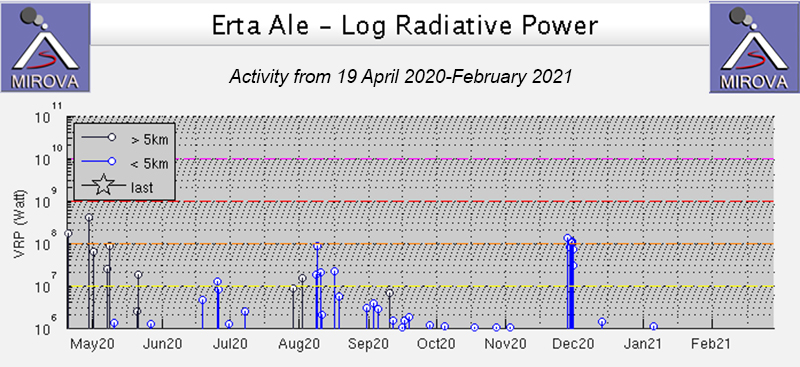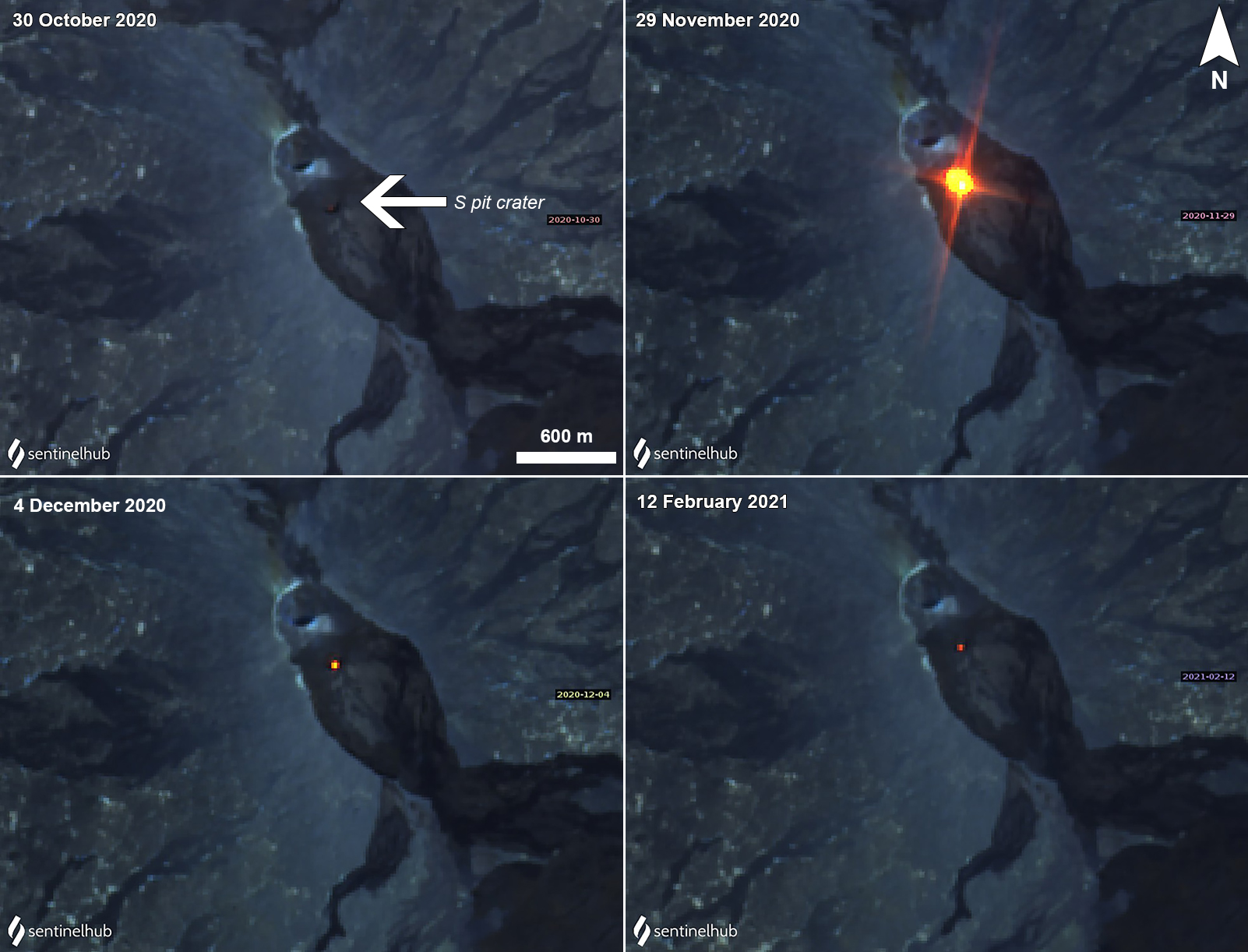Report on Erta Ale (Ethiopia) — February 2021
Bulletin of the Global Volcanism Network, vol. 46, no. 2 (February 2021)
Managing Editor: Edward Venzke.
Edited by Kadie L. Bennis.
Erta Ale (Ethiopia) Brief increase in strong thermal activity during late November-early December 2020
Please cite this report as:
Global Volcanism Program, 2021. Report on Erta Ale (Ethiopia) (Bennis, K.L., and Venzke, E., eds.). Bulletin of the Global Volcanism Network, 46:2. Smithsonian Institution. https://doi.org/10.5479/si.GVP.BGVN202102-221080
Erta Ale
Ethiopia
13.601°N, 40.666°E; summit elev. 585 m
All times are local (unless otherwise noted)
Erta Ale, located in Ethiopia, is a highly active volcano that contains a 0.7 x 1.6 km, elliptical summit caldera with multiple pit craters that frequently host active lava lakes. Another larger 1.8 x 3.1 km wide depression SE of the summit is bounded by curvilinear fault scarps on the SE side. Recent activity has been characterized by lava flow outbreaks (BGVN 45:05) and thermal anomalies detected from pit craters in the summit caldera (BGVN 45:05 and 45:10). This report covers activity from October 2020 through February 2021 and is characterized by a brief period of strong thermal anomalies in late November, which sharply declined in December. Information primarily comes from satellite data.
Activity at Erta Ale had gradually decreased compared to previous months; thermal activity during this reporting period remained primarily in the N summit caldera. MIROVA (Middle Infrared Observation of Volcanic Activity) analysis of MODIS satellite data shows a total of four low-power thermal anomalies from October through most of November. At the end of November, a brief surge of strong thermal activity was detected in the S pit crater of the summit caldera, followed by a sharp decrease the following days (figure 102). Similarly, the MODVOLC system detected a total of eight thermal alerts; two were detected on 29 November and six were detected on 30 November, primarily focused in the summit caldera. Only two thermal anomalies were recorded in the MIROVA graph after this surge of activity; one in mid-December and one in early January. Thermal data from NASA VIIRS detected hotspots on 28-30 November, 1-3 December, and 8 December.
According to Sentinel-2 thermal satellite images, a weak thermal anomaly was first visible on 20 October in the summit caldera. Intermittent, weak anomalies were also detected in the summit caldera on 25 and 30 October and 4, 9, 19, and 24 November. On 29 November the thermal activity increased significantly, detected as a strong hotspot in the S pit crater of the summit caldera (figure 103). This brief increase in power was also recorded in the MIROVA graph and by the MODVOLC thermal algorithm. By 4 December the size and power of this thermal activity decreased significantly, though it was still visible in the summit caldera. Thermal activity was no longer observed after 4 December until clear weather days on 2 and 12 February when a faint anomaly was detected.
Geological Summary. The Erta Ale basaltic shield volcano in Ethiopia has a 50-km-wide edifice that rises more than 600 m from below sea level in the Danakil depression. The volcano includes a 0.7 x 1.6 km summit crater hosting steep-sided pit craters. Another larger 1.8 x 3.1 km wide depression elongated parallel to the trend of the Erta Ale range is located SE of the summit and is bounded by curvilinear fault scarps on the SE side. Basaltic lava flows from these fissures have poured into the caldera and locally overflowed its rim. The summit caldera usually also holds at least one long-term lava lake that has been active since at least 1967, and possibly since 1906. Recent fissure eruptions have occurred on the N flank.
Information Contacts: MIROVA (Middle InfraRed Observation of Volcanic Activity), a collaborative project between the Universities of Turin and Florence (Italy) supported by the Centre for Volcanic Risk of the Italian Civil Protection Department (URL: http://www.mirovaweb.it/); Hawai'i Institute of Geophysics and Planetology (HIGP) - MODVOLC Thermal Alerts System, School of Ocean and Earth Science and Technology (SOEST), Univ. of Hawai'i, 2525 Correa Road, Honolulu, HI 96822, USA (URL: http://modis.higp.hawaii.edu/); Sentinel Hub Playground (URL: https://www.sentinel-hub.com/explore/sentinel-playground); NASA Worldview (URL: https://worldview.earthdata.nasa.gov/).



